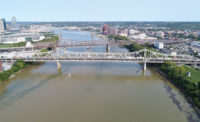Federal response to the Maui, Hawaii wildfire disaster, which ripped through the town of Lahaina beginning Aug. 8, now includes $95 million from the infrastructure investment law to strengthen its power grids, the White House said on Aug. 30.
That follows immediate release of $3 million from the Federal Highway Administration to offset costs associated with repairs to traffic management services and infrastructure on the island, White House officials said previously.
President Joe Biden also appointed Robert Fenton, Federal Emergency Management Agency regional administrator, to coordinate the long-term response. Fenton, FEMA Administrator Deanne Criswell, First Lady Jill Biden and others made the announcements during a presidential visit to the devastated area.
The disaster has claimed at least 115 lives and left 850 people missing.
According to an Aug. 22 estimate by catastrophic risk modeling firm Moody's RMS, the damage and economic impact cost could be up to $6 billion.
"While the economic loss estimate reflects direct and indirect losses from damage to physical assets, it does not consider macroeconomic factors such as expected reduction in the island’s Gross Domestic Product (GDP), government payments, or additional social costs due to the wildfires," Moody's said, adding that the impact is amplified by "the island effect on supply chains, high construction labor costs in general, inflationary impacts during the expected long recovery time, and potential ordinance and law requirements."
Disaster Response Underway
Most power on the island has resumed. As of Aug. 21, Hawaiian Electric said more than 90% of its customers on Maui had electricity, including a wastewater pump station in Lahaina. The utility says it brought more than 400 employees and contractors from other islands to help speed repairs to its grid on Maui. The company installed two mobile substations and was building new distribution lines from them.
The Biden administration says more than 1,000 federal personnel are on Maui to assess damage and begin the laborious recovery process. Among those are more than 700 people from the U.S. Defense Dept. assisting in continuing efforts to suppress the fires, which are about 85% contained but continue to burn. Responders from the U.S. Army Corps of Engineers and contractors are assisting with public works and engineering support, which included installing 15 generators for temporary emergency power.
In remarks at the Lahaina Civic Center, President Biden told local residents and community leaders that the administration would do “whatever it takes, as long as it takes” to rebuild Maui in a way that incorporates community input and priorities.
FEMA's Fenton has been “on the ground [in Hawaii] from day one,” said Olivia Dalton, White House principal deputy press secretary. He will “be there over the long term to make sure that not just today and tomorrow but into the future, there is a coordinated, strategic, federal response because this is going to be a long, hard process." Fenton previously oversaw the federal response to Monkeypox and a 2022 federal initiative to support vulnerable Afghan immigrants in the U.S.
Warning Sirens Failed
In the wake of the disaster, two narratives have emerged. One attributes the devastation to the impacts of climate change and the other to incompetence and negligence on the part of local authorities and local utility Hawaiian Electric Industries Inc. At least seven lawsuits filed since fires started blame Hawaiian Electric and its subsidiaries at least partly for the destruction.
Pending further investigation, most local accounts attribute cause of the fires to sparks from downed electrical lines that were then spread by high winds from Hurricane Dora. It never made landfall in Hawaii, but gusty winds estimated at 60-80 mph drove the fire, which was hot enough to melt metal and left little behind except ash and toxic waste.
Those who escaped alive said warning sirens failed to sound and electronic notification was not received by Lahaina residents prior to an area-wide loss of power. Herman Andaya, administrator of the Maui Emergency Management Agency, resigned Aug. 17 amid criticism over his decision not to use sirens because, he said, they could have driven people toward the fires. Andaya cited health reasons for the resignation.
Lawsuits filed allege Hawaiian Electric knew about the risk of fires generally, having previously sought funding to offset the cost of making its grid more resilient. They also allege the company kept lines energized even during forecasted high winds that prompted National Weather Service advisories of fire danger and toppled more than 30 utility poles. One suit claims the Lahaina fire started in an area near a Hawaiian Electric power substation where a downed power line had been reported.
Representatives from Hawaiian Electric did not immediately respond to ENR queries.
Also contributing to the damage was lack of water pressure attributed to pump failure when the electrical system went down, as well as widespread growth of invasive grasses and brush in nearby former agricultural lands, all of it tinder dry. The historic town itself, an economic engine for Maui, was largely built of wood. There were few firewalls along the Front Street commercial area where many buildings dated from the 1920s.
Of more than 60 boats in Lahaina Harbor at the time of the fire, only six remained. Harbor dredging and search of nearby waters has not yet begun.







Post a comment to this article
Report Abusive Comment